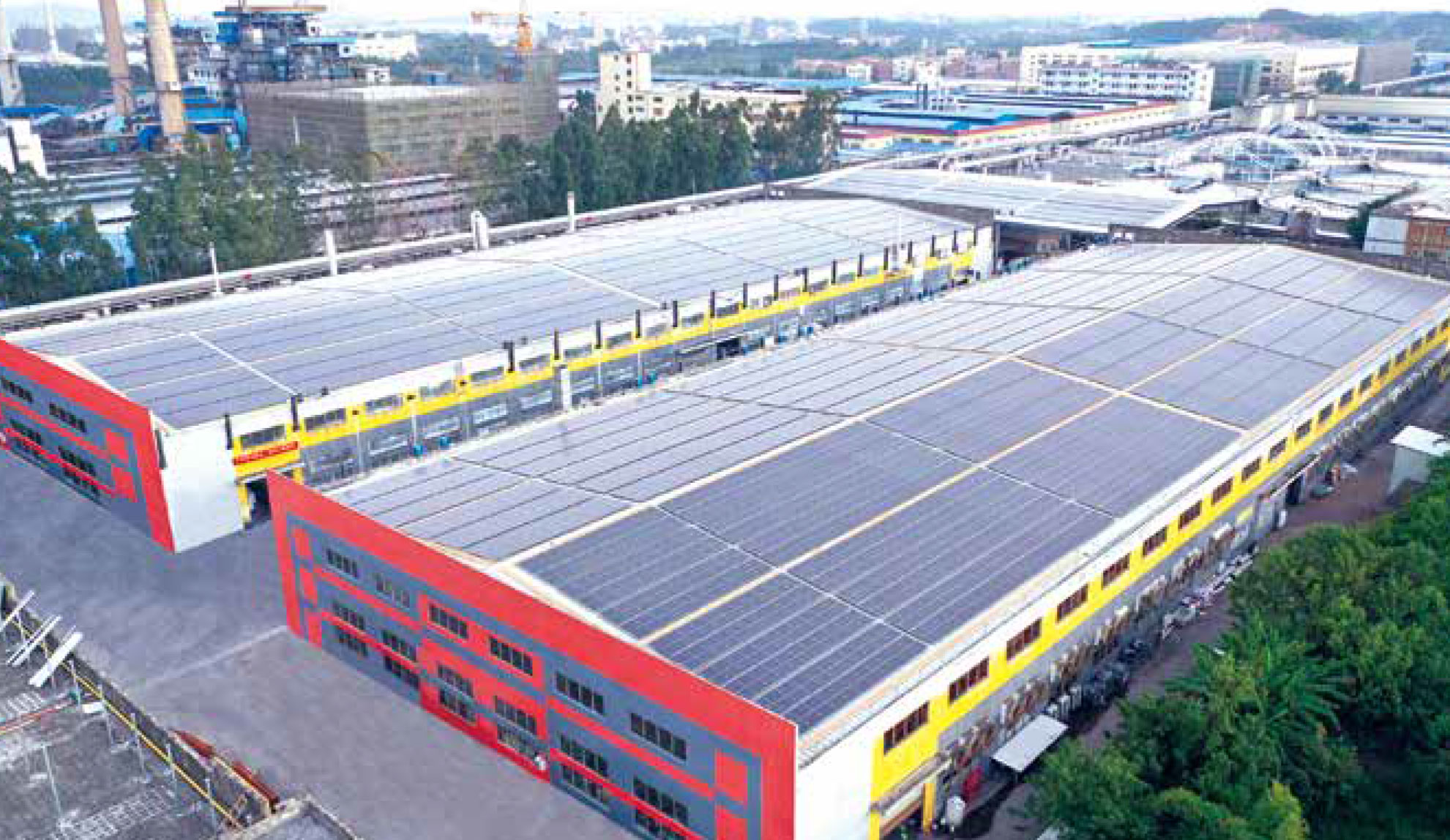分布式光伏發電與集中式光伏發電有什么區別?
一、定義與規模
1、 Definition and scale
分布式光伏發電通常是指在用戶端安裝的小型光伏發電系統,其發電量一般在數千瓦至數百千瓦之間。這些系統直接連接到配電網,并為用戶提供電力。相比之下,集中式光伏發電則是在大型電站中安裝的大型光伏陣列,其發電量通常在數兆瓦至數百兆瓦之間。這些電站通常通過高壓輸電線路將電力傳輸到遠方用戶。
Distributed photovoltaic power generation usually refers to small photovoltaic power generation systems installed at the user end, with a power generation capacity generally ranging from several kilowatts to several hundred kilowatts. These systems are directly connected to the distribution network and provide electricity to users. In contrast, centralized photovoltaic power generation refers to the installation of large photovoltaic arrays in large power plants, with power generation typically ranging from several megawatts to hundreds of megawatts. These power stations usually transmit electricity to remote users through high-voltage transmission lines.
二、系統結構與運行方式
2、 System structure and operation mode
在系統結構上,分布式光伏發電系統通常與配電網直接相連,形成一個并網系統。在這種系統中,配電網不僅傳輸電能,還為光伏系統提供必要的支撐,以確保系統的穩定運行。而集中式光伏電站則通過高壓輸電線路與大電網連接,其運行受到大電網的調度和控制。
In terms of system structure, distributed photovoltaic power generation systems are usually directly connected to the distribution network, forming a grid connected system. In this system, the distribution network not only transmits electrical energy, but also provides necessary support for the photovoltaic system to ensure its stable operation. The centralized photovoltaic power station is connected to the power grid through high-voltage transmission lines, and its operation is subject to the scheduling and control of the power grid.
三、環境影響與土地利用
3、 Environmental Impact and Land Use
在環境影響方面,分布式光伏發電通常對環境的影響較小。由于其規模較小,對土地和水資源的需求較低,且在安裝過程中無需大規模的土地開發。然而,集中式光伏電站由于規模較大,往往需要大面積的土地開發,這可能導致土地資源的占用和生態環境的變化。此外,集中式電站的建設還可能涉及水資源的使用和自然景觀的改變。

In terms of environmental impact, distributed photovoltaic power generation usually has a relatively small impact on the environment. Due to its small scale, the demand for land and water resources is low, and there is no need for large-scale land development during the installation process. However, centralized photovoltaic power stations often require large-scale land development due to their large scale, which may lead to the occupation of land resources and changes in the ecological environment. In addition, the construction of centralized power stations may also involve the use of water resources and changes in natural landscapes.
四、能源利用與效率
4、 Energy utilization and efficiency
在能源利用和效率方面,分布式光伏發電由于靠近用戶,能夠更好地適應電力需求的變化。同時,由于其規模較小,維護和運營相對簡單,能源轉換效率較高。而集中式光伏電站由于規模較大,需要大量的電力傳輸和轉換,可能會導致能源損失和效率降低。此外,集中式電站的建設和維護成本通常較高,需要大規模的投資才能實現經濟效益。
In terms of energy utilization and efficiency, distributed photovoltaic power generation can better adapt to changes in electricity demand due to its proximity to users. Meanwhile, due to its small scale, relatively simple maintenance and operation, and high energy conversion efficiency. However, centralized photovoltaic power stations, due to their large scale, require a large amount of power transmission and conversion, which may lead to energy loss and reduced efficiency. In addition, the construction and maintenance costs of centralized power stations are usually high, requiring large-scale investment to achieve economic benefits.
五、可擴展性與靈活性
5、 Scalability and flexibility
在可擴展性和靈活性方面,分布式光伏發電具有明顯的優勢。隨著技術的進步和成本的降低,分布式光伏系統的規模和性能可以輕松地擴展和升級。此外,由于其位于用戶端,可以靈活地滿足特定用戶的能源需求和偏好。相比之下,集中式光伏電站的建設需要大規模的投資和長時間的規劃,其擴展和靈活性相對較低。
Distributed photovoltaic power generation has significant advantages in scalability and flexibility. With the advancement of technology and the reduction of costs, the scale and performance of distributed photovoltaic systems can be easily expanded and upgraded. In addition, due to its location on the user side, it can flexibly meet the energy needs and preferences of specific users. In contrast, the construction of centralized photovoltaic power stations requires large-scale investment and long-term planning, and their expansion and flexibility are relatively low.
六、經濟性與投資回報
6、 Economy and investment return
在經濟性方面,分布式光伏發電通常具有更高的投資回報率。由于其規模較小,建設和運營成本較低,且能夠快速回收投資。此外,由于分布式光伏系統可以為用戶提供電力供應保障和節能收益,因此其經濟效益更加明顯。而集中式光伏電站的建設成本較高,且需要大規模的資本投入和長時間的運營才能實現經濟效益。
In terms of economy, distributed photovoltaic power generation usually has a higher investment return rate. Due to its small scale, low construction and operating costs, and ability to quickly recover investment. In addition, due to the fact that distributed photovoltaic systems can provide users with electricity supply guarantees and energy-saving benefits, their economic benefits are more significant. The construction cost of centralized photovoltaic power stations is relatively high, and large-scale capital investment and long-term operation are required to achieve economic benefits.
新聞推薦
product recommendation聯系方式
Contact Information

 TEL:0531-82390078
TEL:0531-82390078 TEL:18805312017
TEL:18805312017 MAI:sdzdny001@163.com
MAI:sdzdny001@163.com 公司地址: 濟南市歷下區山大路157號
公司地址: 濟南市歷下區山大路157號 天合藍天·山東種電
天合藍天·山東種電 備案號:魯ICP備17052940號-2
魯公網安備37010202700164號
備案號:魯ICP備17052940號-2
魯公網安備37010202700164號
 網站地圖|XML|TXT
網站地圖|XML|TXT

掃一掃方便咨詢我們

截屏,微信識別二維碼
微信號:18805312017